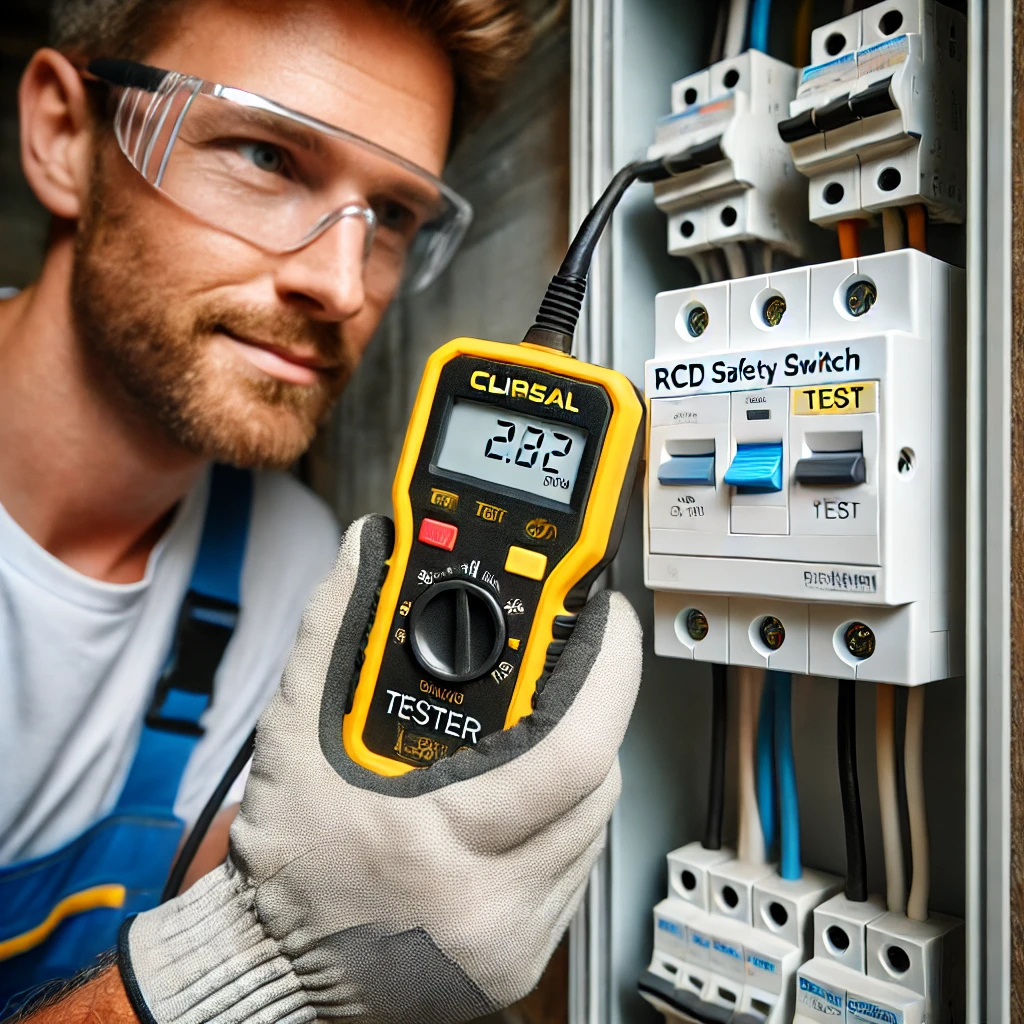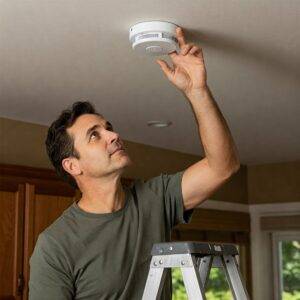Understanding RCD Test Procedures: A Guide to Electrical Safety
Safety Switch RCD testing.
Why Test RCDs?
Residual Current Devices (RCDs) are critical components in electrical safety systems, designed to prevent electric shock and reduce the risk of electrical fires. Regular testing of RCDs ensures their reliability and effectiveness. Regular testing helps to:
- Ensure the RCD is functioning correctly.
- Detect faults before they become hazards.
- Comply with electrical safety regulations.
- Maintain a safe working or living environment.
- Adhere to Australian Standards, Building Codes and compliances.
RCD Safety Switch Test Procedures – How To Test
There are two primary methods of testing an RCD: manual testing using the built-in test button and instrument testing using an RCD tester, performed by electricians.
- Manual Test (Push-Button Test)
This is a simple and quick test that should be performed regularly.
- Locate the test button on the RCD unit.
- Press the test button; the RCD should trip immediately, cutting off power.
- Reset the RCD by switching it back on.
- If the RCD does not trip, contact a qualified electrician for inspection.
- Instrument Test (Trip Time Test)
A more thorough test is performed using an RCD tester to measure the trip time and sensitivity of the device.
- Connect the RCD tester to the circuit.
- Set the tester to the appropriate test current (e.g., 30mA for residential RCDs).
- Initiate the test; the tester will simulate a fault condition and measure the RCD’s response time.
- Verify that the trip time is within acceptable limits (typically less than 300ms for a 30mA RCD).
- Record the results for compliance and maintenance records. Example video: Testing Video
Best Practices for RCD Testing
- Test regularly: Perform manual tests every 3-6 months and instrument tests annually.
- Follow manufacturer guidelines: Refer to the RCD’s user manual for specific testing recommendations.
- Keep records: Maintain a log of test results to track performance over time.
- Consult a professional: If any irregularities are detected, seek assistance from a Triosa.
Conclusion
RCDs play a vital role in electrical safety, protecting lives and property from electrical faults. By following a regular testing routine and annual professional testing from Triosa Electrical, and adhering to best practices, you can ensure the ongoing reliability of your RCDs. Don’t overlook this essential aspect of electrical safety—test your RCDs today!

















